Freewell Magnetic Variable ND review: thin, fast, almost perfect
Freewell reinvents the wheel with a unique filter system designed for maximum flexibility and opportunity

The Freewell Magnetic Variable ND filter system is a modular filter kit unlike anything else currently on the market. I’ve been shooting photos and videos with the Freewell magnetic VNDs for a few weeks, and in this review, I’ll explain how this unique system works, who it’s for, and offer my opinion on whether it’s worth buying.
- Super fast and easy to attach and detach when needed
- Good color accuracy and vignette performance
- Thin and light
- Diffusion mist base filter for softening details and smoother highlights
- Great value when compared to buying multiple solid NDs
- Some darkening and cross-polarization at strongest densities
What’s in the box
The Freewell Magnetic VND system is available in 58, 62, 67, 72, 77, 82 and 95mm diameters and comes with all of the following components:
- One base ring
- One VND base ring filter
- One VND diffusion mist base ring filter (1/8 strength)
- One 2-5 stop VND / CPL filter
- One 6-9 stop VND / ND32 CPL filter
- One magnetized lens cap
- One carrying case
How it works
First step is threading the base ring onto a lens. The base ring provides the requisite magnetized mount for filters to quickly attach and detach.
Next step is choosing between neutral density (to darken exposure) or polarization (to remove reflections and increase clarity).
For neutral density, you add either the VND base ring filter or the VND diffusion mist base ring filter to a mount inside the base ring. Then you magnetically attach either the 2-5 stop or 6-9 stop VND filter to the front of the base ring with the “VND” label facing out. Align the “A” on the VND filter with the corresponding “A” on the base ring, then press until you hear a “click”. Once properly aligned, the VND then has hard stops when reaching its minimum and maximum values.
For polarization, do not add a filter to the base ring. If one has been inserted, remove it. Next, flip a “VND” filter over to its “CPL” side, then attach magnetically. CPL filters don’t require alignment, and can rotate a full 360 degrees without hard stops.
But wait, how can one filter do two different things? Is it magic? No, but it is clever.
Threaded VNDs are constructed using two panes of polarized glass. For this system, Freewell separated these panes into two filters. One half is the filter mounted inside the base ring, the other half is mounted in front. Once mounted and aligned, there are two panes of polarized glass, just like a traditional, threaded VND.
Remove the base ring filter, and there’s now one pane of polarized glass (which is effectively a circular polarizer is).
All told, Freewell is effectively providing with this system four VNDs (two with diffusion, two without) and two circular polarizers filters for hundreds less than buying each filter type individually.
Lens compatibility and vignette performance
The Freewell magnetic VND system may be used with circular filter threads measuring 58, 62, 67, 72, 77, 82 or 95mm in diameter.
Purchasing the Freewell magnetic VND system is like buying any other filter — you buy the largest diameter you need, then use step-up rings to mount the same system on smaller diameter lenses. Step-up rings may negatively impact vignette performance (because the filter stack will then be thicker), but they offer considerable cost savings.
(Update August 2022: Freewell is now selling magnetic VND step-up rings. These effectively combine a step-up ring with the magnetic VND mount; allowing you to quickly use the same filters on smaller diameter lenses.)
Freewell claims their magnetic VND system can be safely used with any 16 or 17mm full frame lens without adding vignette (on top of the natural, optical vignette of the lens). This means cleaner images without additional darkening around the edges and corners — even when shooting wide angle.
Filter compatibility
The magnetized base ring in this VND system is also compatible with all Freewell Quick Swap magnetic filters. This means if you already own a Freewell magnetic filter, or plan on adding more to your collection, you may use them with VND base ring.
Non-magnetized, threaded lenses, however, are not compatible. This is because neither the magnetic filters nor the base ring offer outward facing threads.
Color accuracy and sharpness
Quality neutral density filters darken photos and videos without affecting color. A filter with high color accuracy contributes less color cast, which translates into less work in post fixing what the filter added.
To test color accuracy, I captured a number of RAW images using a Canon EOS R5 in a controlled studio environment. Both the camera and light were set to 5600 kelvin, and the same exposure settings were used at all times (with the exception of shutter speed to match exposure). All images shown below are straight-out-of-camera with no adjustments in post.
Here is the first result with a control image (no filters) on the left, and the same image with the Freewell magnetic 2-5 stop VND and 1-stop base ring filter on the right.
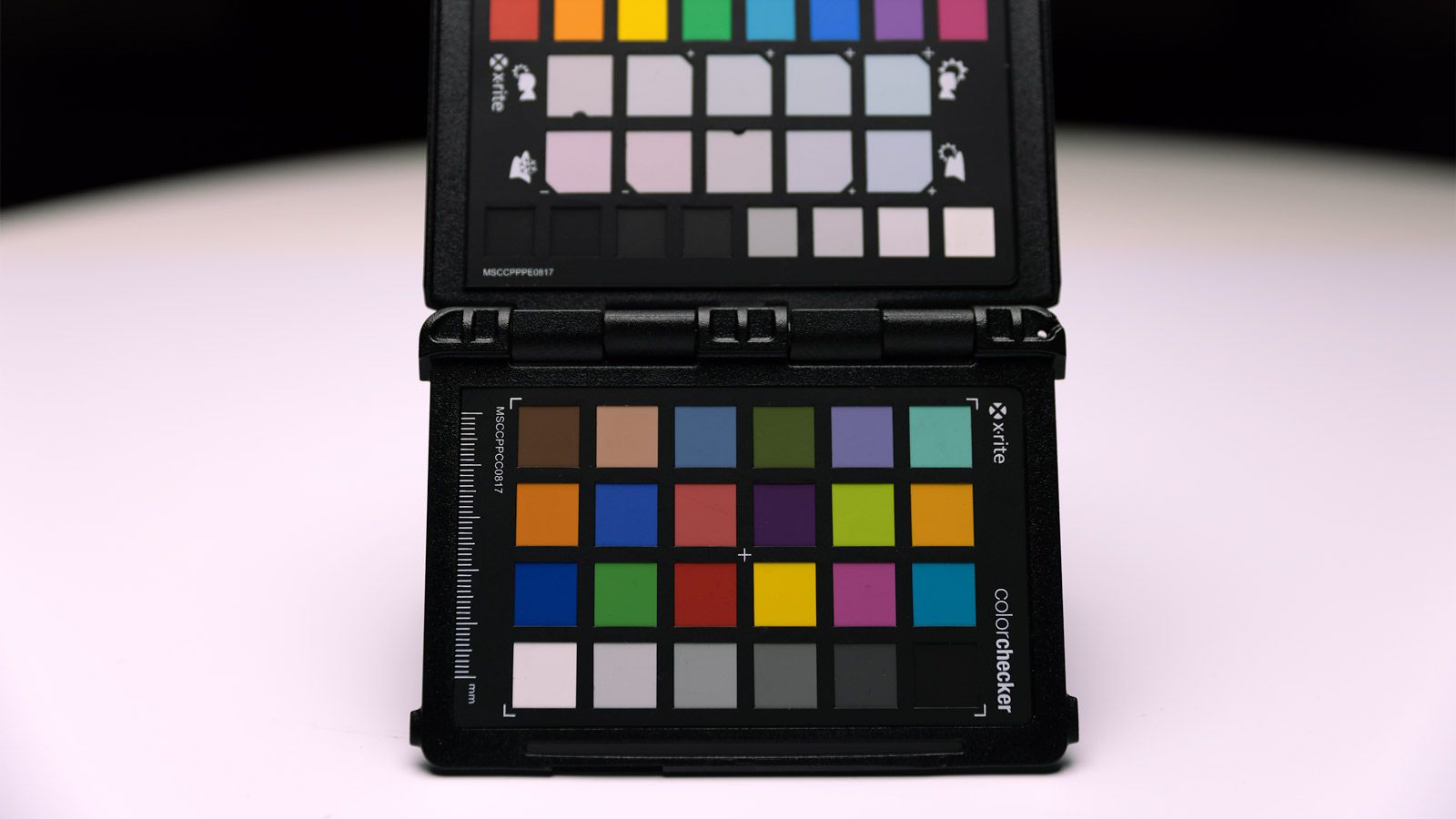
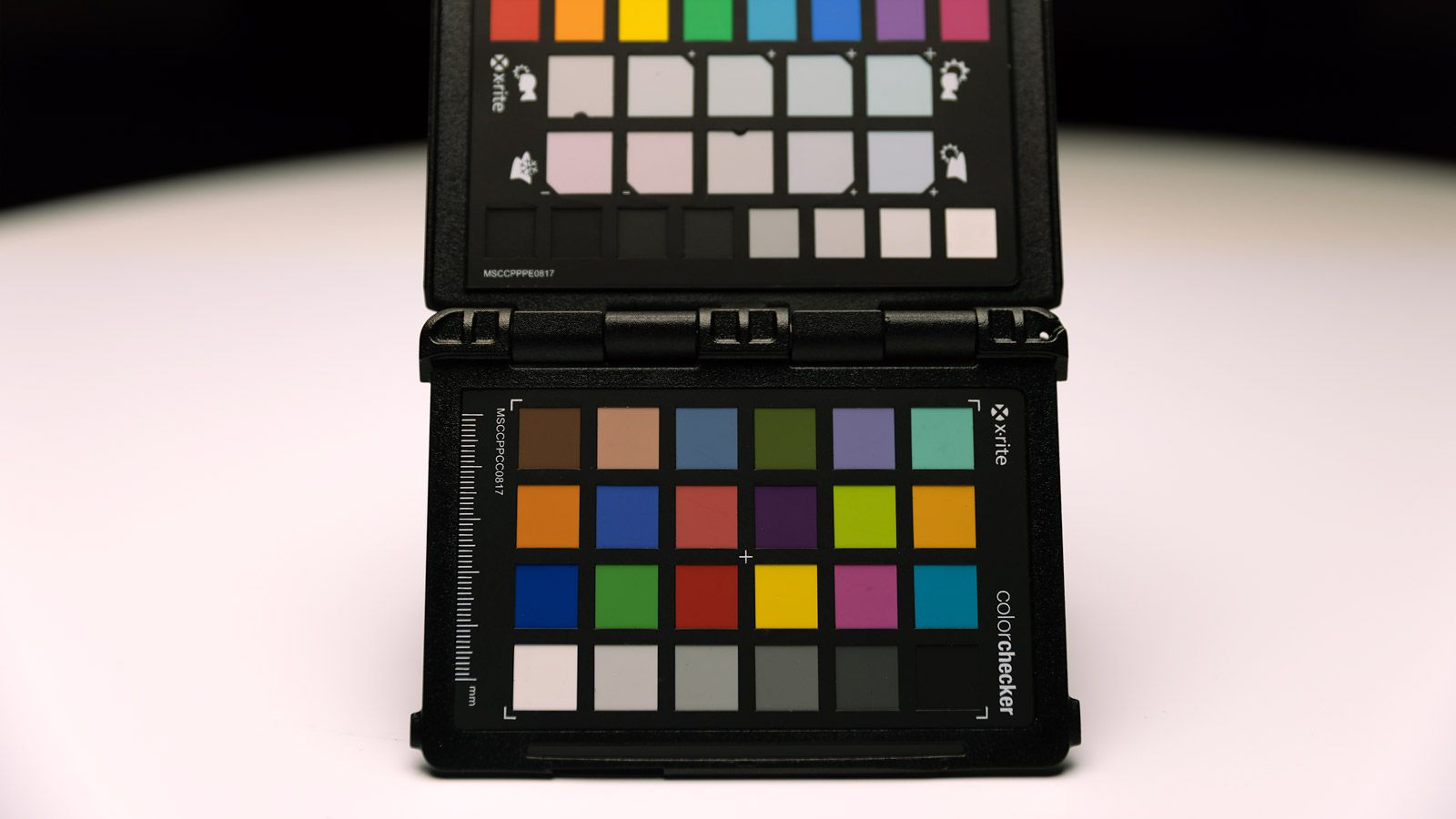
Here is the same test, but now with the Freewell 6-9 stop VND.

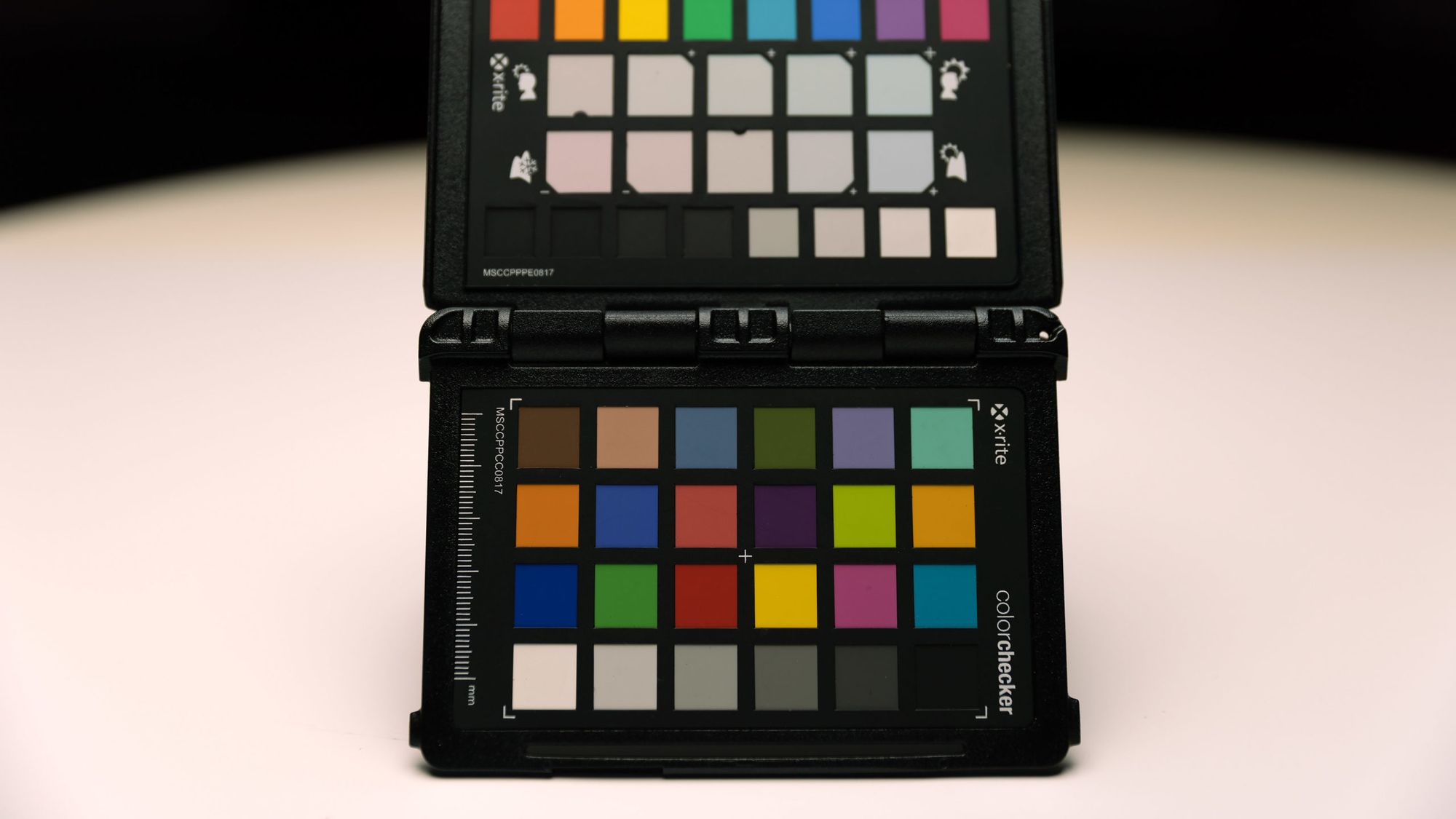
I then swapped the 1-stop base ring filter with the 1/8 diffusion mist filter and shot another image with the 2-5 stop VND.

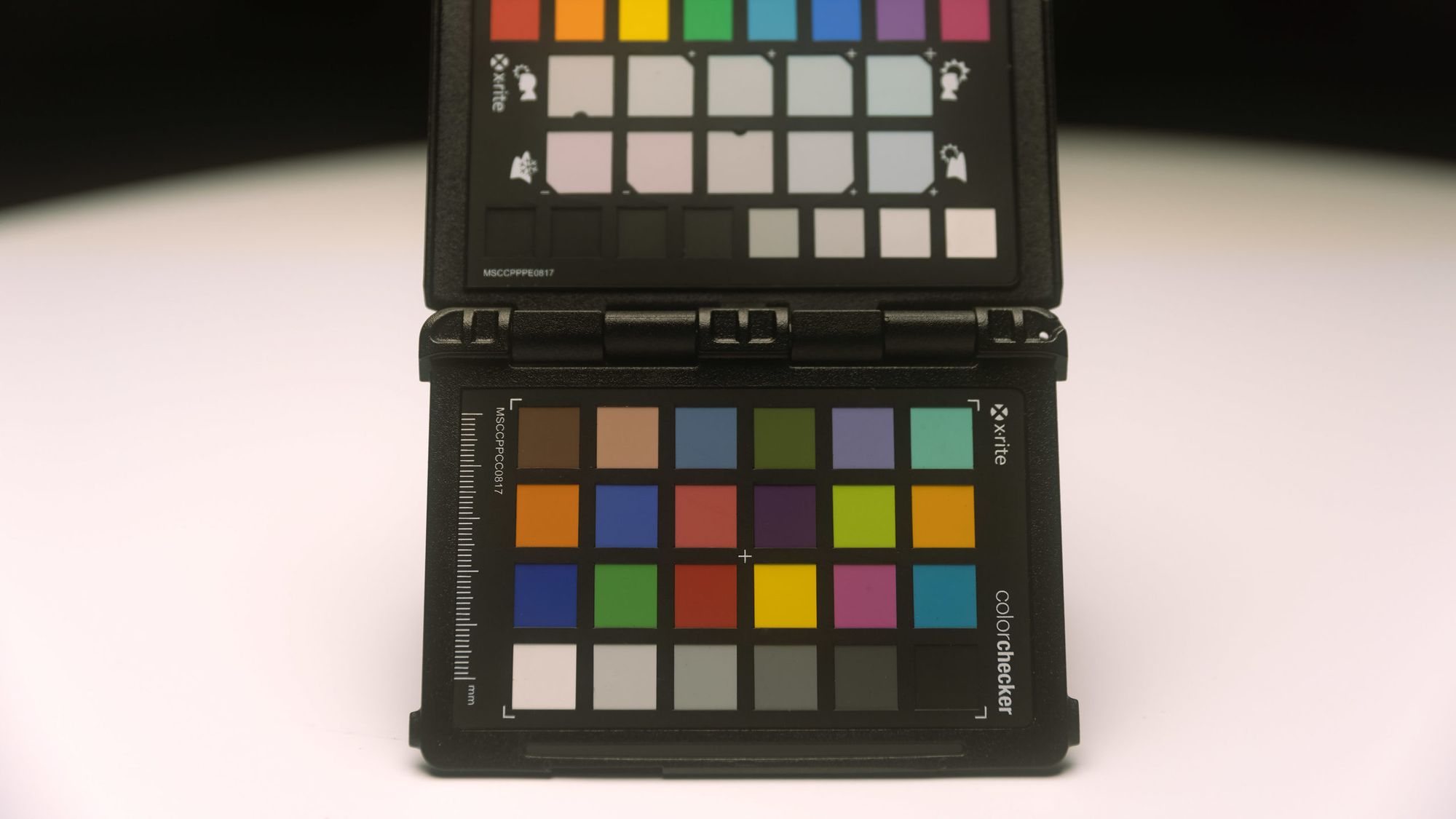
As expected, the mist diffusion filter refracts light and softens contrast. There’s noticeable lift in the darkest shadows, which is a positive effect for many videographers and filmmakers looking to make their in-camera footage appear more filmic and less digital.
In all of these comparisons, the Freewell magnetic VNDs added a fair, but not unmanageable amount of warmth. Color cast is normal for any VND, and is usually correctable in post by tweaking color temperature and tint. Below are the same two images from the first comparison color corrected in Photoshop.
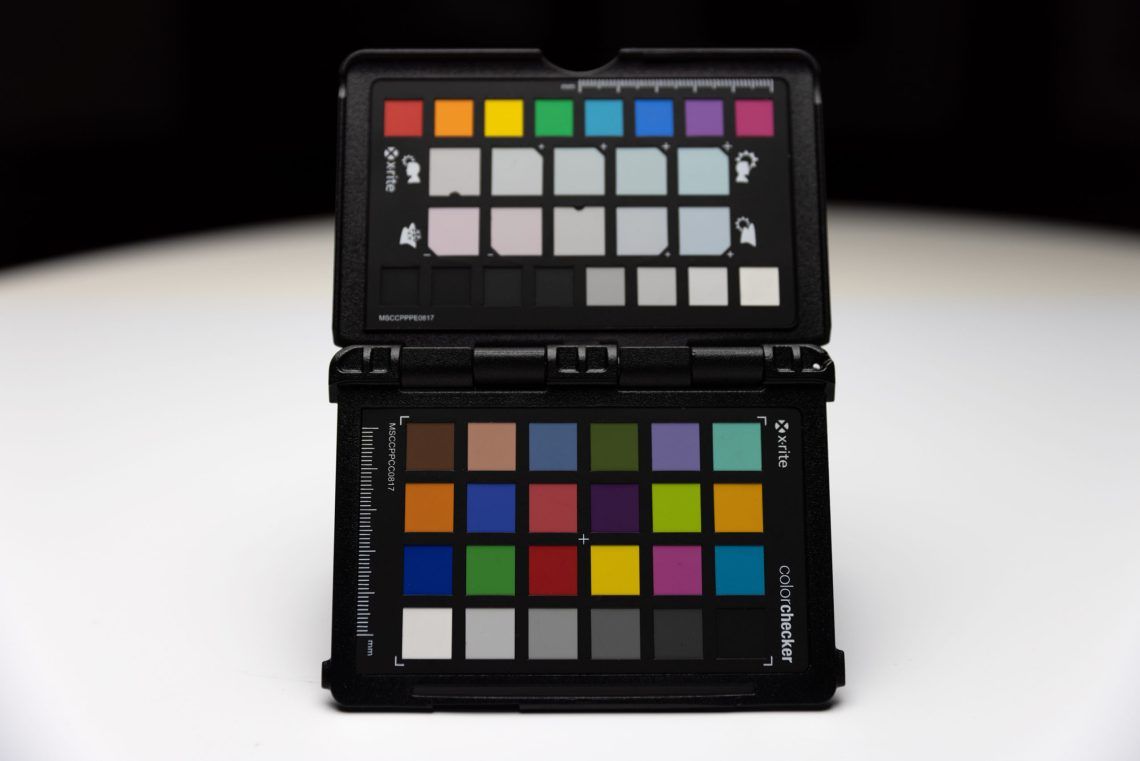
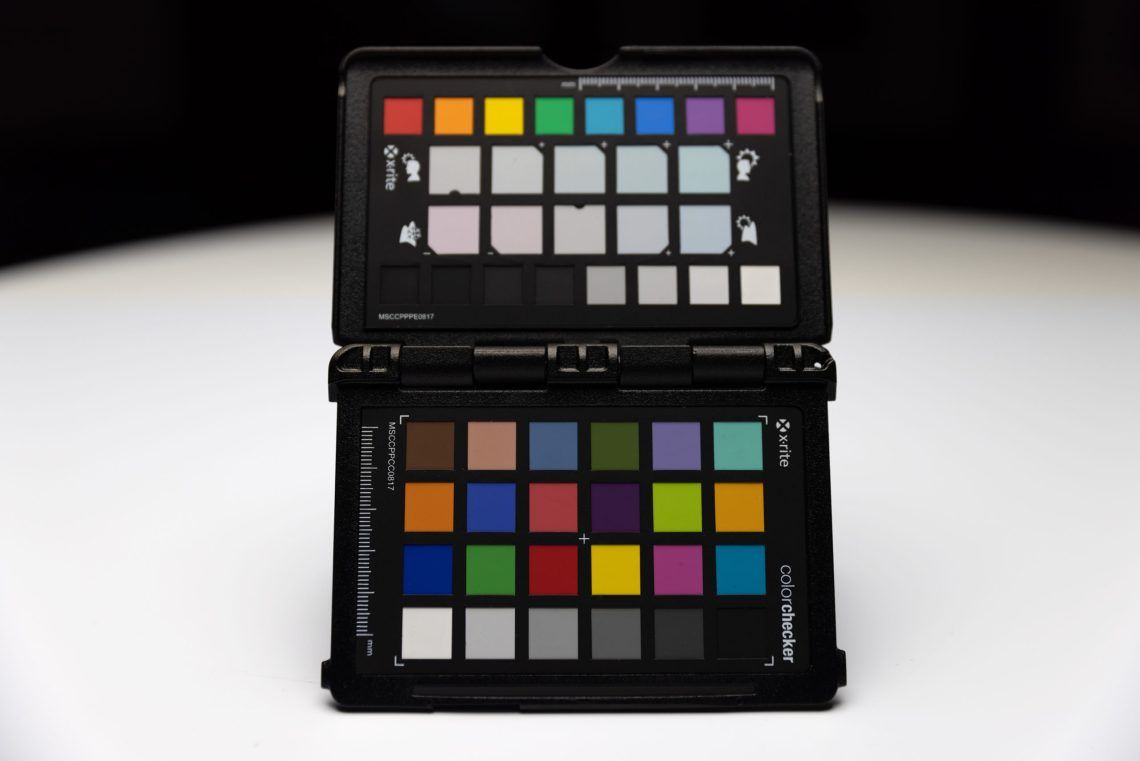
As you can see, there’s now little-to-no difference between the control and the Freewell 2-5 stop VND image. What this means overall is a little extra time in post color correcting photos and videos (which needs to be done anyway as evidenced by color cast in the control image as well).
Concerning sharpness and clarity, there is no discernible difference with the Freewell VND filters attached. Images appear just as sharp as you’d expect.
Circular polarizers
As explained earlier, both the 2-5 stop VND and 6-9 stop VND may be used as circular polarizers when flipped over (and the base ring filter is removed). Circular polarizers improve clarity, increase saturation, and bring highlights under control. They are frequently used in landscape photography to remove reflections and punch-up color and clarity, though they can of course be used when shooting video as well for a similar effect.
For example, below are two frames from a 4K video shot with (right) and without (left) the ND32 CPL (from the 6-9 stop VND). Aperture was adjusted in the ND32 CPL image to compensate for the filter’s five-stop exposure reduction.


The ND32 did a good job of increasing contrast and clarity — especially in the trees and green foliage. The five-stop reduction in exposure also allowed the camera to shoot at a larger aperture. When five stops aren’t necessary, you may use the CPL from the 2-5 stop VND filter for similar results.
User experience
Like other magnetized filters, the speed at which these filters are attached and detached from a lens is fantastic. Each filter rotates nearly as smooth as a threaded filter, and the hard stops effectively prevent the VNDs from being overturned in either direction. When flipped over, the CPL filters rotate smoothly and easily.
Changing or removing the base ring filter is a bit more cumbersome. That’s because these filters mount flush within the frame, and must be lifted out using your fingernail. Other Freewell “Quick Swap” magnetic filters are even more time consuming, for they don’t include liftable notches. Support for existing “Quick Swap” filters is a nice feature-add, but it doesn’t function as well as the filters’ native base rings.
Additionally, when the kit is setup for VNDs, removing a magnetized VND won’t immediately return your camera to “normal” exposure. There will still be the 1-stop VND base filter inside the base ring. You could of course remove the base filter, but for speed and convenience, it’s easier to leave it in and open the camera aperture or raise ISO a stop to accommodate.
And then there’s the magnetized lens cap. It works fine with the base ring, but not with mounted filters. The lens cap removes filters when detached, which means you then have to separate the cap from the VND, then re-attach the VND. In fairness, I don’t think Freewell could have designed this any differently due to the magnetized nature of everything. One will just have to get in the habit of detaching a VND before using the lens cap.
Finally, the provided carrying case is fantastic. It’s rugged, durable, and provides all the necessary slots to hold each filter without the filters sticking together. I do however wish the case had some kind of loop for attaching it to a belt or bag for quicker access.
Final thoughts
Anyone who needs neutral density filters will enjoy using the Freewell Magnetized VND system, but run-and-gun hybrid shooters using consumer DSLR and mirrorless cameras should love it. You may shoot photos one minute, flip the camera to video mode, throw on a variable ND to control shutter speed, and keep going.
Additionally, VNDs are a good value, for you’d have to buy eight solid NDs to match the same range of densities provided by these Freewell VNDs. You may still need at least one or two solid NDs for more challenging environments (as explained earlier), but the Freewell VNDs provide more exposure control for less money and hassle.
Videographers and filmmakers should also appreciate the diffusion mist base filter. The filter’s 1/8 strength is just enough to create the desired effect without being too obvious (as it can be with stronger, 1/4 strength mist filters). Some videographers using cameras with super sharp digital sensors could very well leave this “mist” filter in their base ring at all times.
Pricing
Check the current price of the Freewell Magnetic Variable ND System by clicking the button below.
Video review
Here’s a video review of the Freewell Magnetic Variable ND system from my YouTube channel.



